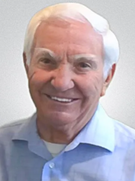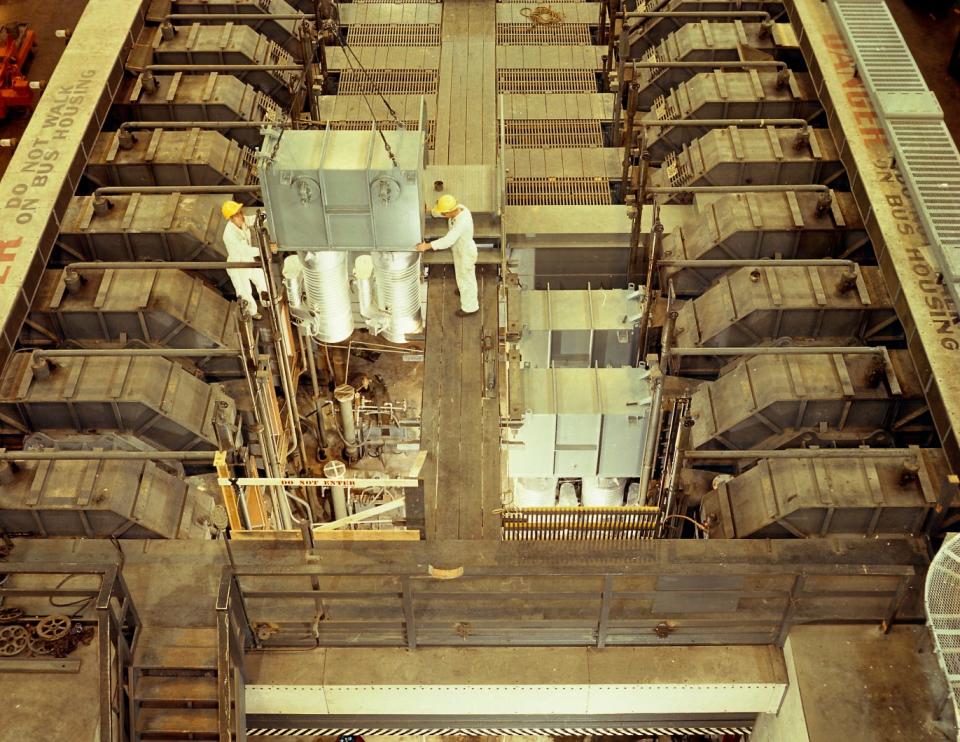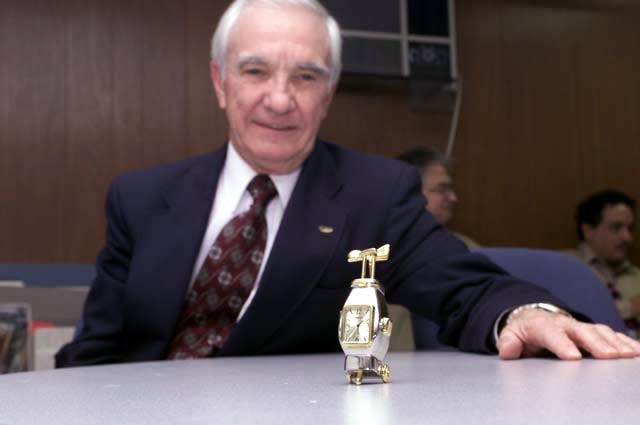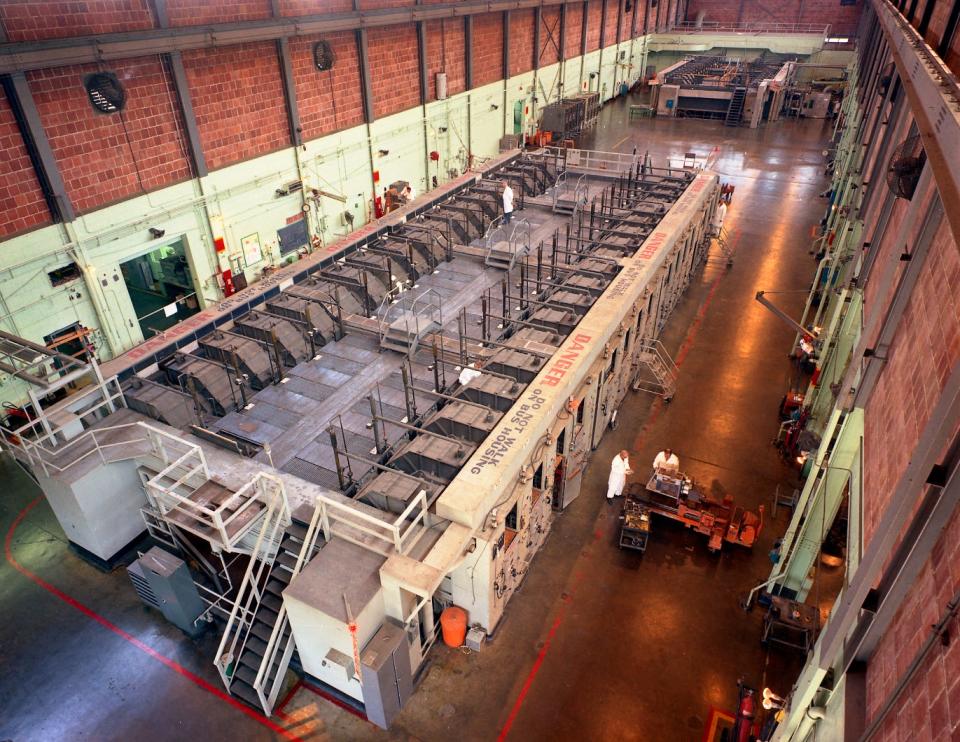Joe Tracy leaves legacy of isotope separation knowledge, relationships
- Oops!Something went wrong.Please try again later.
In the separation of isotopes, Joe Tracy’s legacy looms large.
Having retired in 1999 from a 40-year career in isotope enrichment, Tracy then served as a part-time subject matter expert in Oak Ridge National Laboratory’s Isotope Science and Engineering Directorate and previous related organizations, drawing on his vast experience and passion for problem-solving to advise the next generation of researchers.

Tracy died Dec. 2 at Methodist Medical Center of Oak Ridge after falling ill on the ORNL campus on his way to a weekly research meeting with the team. Several of his colleagues, along with ORNL emergency personnel, responded quickly to render aid.
“Over the past 20 years of retirement, Joe would come to the lab once a week or more to observe, brainstorm, discuss, suggest and, at times, challenge our team,” said Mike Zach, a stable isotopes material processing researcher who said he was one of many Tracy mentored. “It was always a great ego check for the team to learn what we felt was a new discovery had been observed 50 years before as an annoying curiosity they had engineered a different way to overcome.
“The team was fond of saying, ‘Joe could forget more than we know and still make great contributions.’ His amazing insights, and friendship, will be greatly missed.”
Tracy grew up in Redhouse, Kentucky, a small community outside Richmond. There, he graduated eighth grade but attended high school only briefly before dropping out. At age 18, he joined the U.S. Navy, like his father before him, finishing service at 21 and marrying shortly afterward.
Tracy then decided to obtain his GED and worked nights as a projectionist in two theaters while attending Eastern Kentucky State University. On May 5, 1959, days after he graduated with a degree in math and physics, Tracy had a job interview with ORNL’s Isotope Enrichment Group, then located at the Y-12 National Security Complex. It was the same day Oak Ridge voted to break away from the U.S. Army and become a self-governed city.
“I remember driving into Oak Ridge the first time,” Tracy told interviewer Keith McDaniel for a 2011 oral history. “I drove under that underpass at Elza Gate, and I drove into what looked like an Army town to me at that time because it still had a lot of barracks. … I thought, ‘Well, if I get a job here, I’m not going to stay here too long. This place reminds me too much of Bainbridge, Maryland,’ where I did my boot camp.”

But Tracy became a devoted Oak Ridger and worked the entirety of his career in one building and one division, the Isotope Enrichment Group. From 1980 to 1998, he served as its program manager.
Tracy worked with calutrons, large World War II-era machines that isolated individual isotopes from one another. Having helped end the war by separating uranium – “It saved countless lives because we didn’t have to invade Japan,” Tracy said − the calutrons were being used to separate stable isotopes for medical uses and basic research.
Besides medical radioisotopes, “a large number of them was used for … determining the neutron cross-section of all the isotopes of every element, and that was important in a lot of reactor designs,” Tracy said.
“It is hard to summarize what Joe accomplished technically and through personal relationships developed over many decades in the isotope business,” said senior stable isotopes scientist Scott Aaron, who worked very closely with Joe for more than 20 years. “Throughout the ups and downs of the Isotope Program over those decades, Joe maintained his optimism and dedication to meeting the isotope needs of the nation and those of researchers and customers around the world using the calutrons to produce enriched stable and actinide isotopes for research, commercial and national security applications.”
Tracy’s group separated every element that had more than one isotope, building the national stable isotope stockpile ORNL stewards today. In 1998, the calutrons ceased operations; Tracy remembered the last separation, strontium-84. Shortly thereafter, he retired.

But he had developed a passion for isotopes, and he wasn’t satisfied with a retirement spent golfing and relaxing. He returned to ORNL in a part-time advisory role.
“Joe remained a voice and trusted consultant in the enrichment technology development and deployment efforts that continue to this day at ORNL,” said Brian Anderson, director of the Enrichment Science and Engineering Division at the lab. “A large portion of our work is rooted in the efforts of Joe and others from those historic days to advance our national capabilities.”
Tracy’s legacy now includes contributions to the development of a new generation of isotope separation devices, of which he was especially proud. He reviewed new concepts and mechanical designs and provided expertise in the areas of plasma physics, magnetics, electronics, elemental feedstock and experimental troubleshooting.
“He loved isotopes and was excited to be part of creating new ways to make them,” said ISED Associate Lab Director Jeremy Busby. “His experience, his determination and his passion made us all better.”
Anderson said Mr. Tracy will be missed on many levels.
“This is a time to mourn but also to celebrate Joe’s life,” he said. “He was a technical contributor − but more important, he was a member of our ORNL family and will be remembered for bringing his smile and friendship to the lab.”
Aaron said Tracy excelled at establishing close team relationships with all staff involved in isotope enrichment and processing.
“From craft support to shift operations staff through R&D and technical staff, everyone was dedicated to working together to accomplish the important missions of the Isotope Program,” Aaron said. “In most cases, that led to lifetime friendships and respect for the contributions of each person.”
Zach calledTracy a “hero,” saying he thrived on contributing to isotope science for 68 years.
“I want to be like him in my late 80s, with a love of science, fulfilling a critical national need,” Zach said. “He went exactly how he would have wanted to go: headed in to give a bit more.”
Tracy’s family received friends Thursday, Dec. 7, at First United Methodist Church of Oak Ridge. A memorial service followed with the Rev. Jenny Caughman officiating. A reception to celebrate Joe’s life will be held for friends and family at Avalon Country Club at 3 p.m. Friday, Dec. 8. A private inurnment will be held at a later date.
Online condolences may be left at weatherfordmortuary.com.

Kristi Nelson Bumpus is a science Writer for the Isotope Science and Engineering Directorate.
This article originally appeared on Oakridger: Joe Tracy leaves legacy of isotope separation knowledge, relationships

